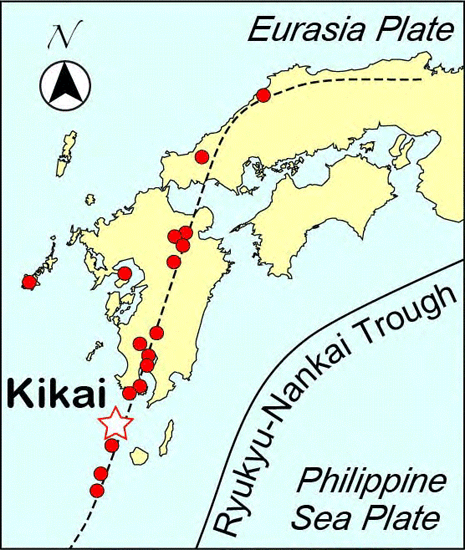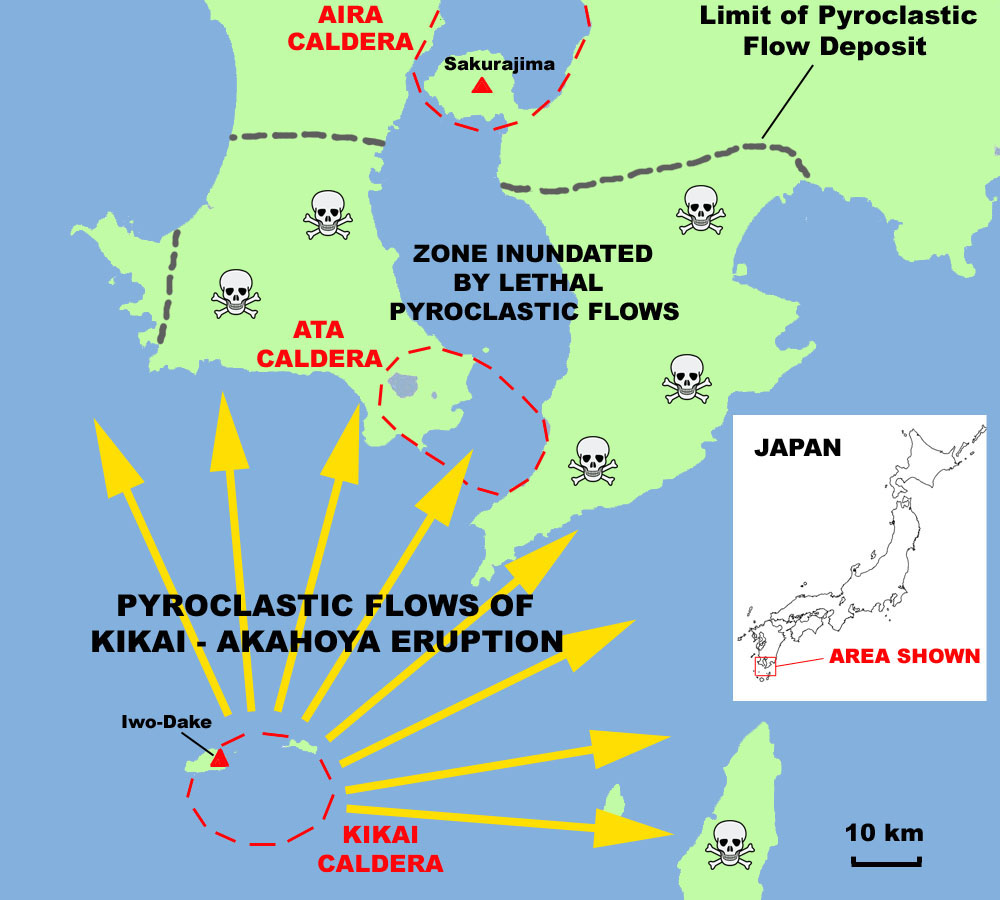Underwater supervolcano could erupt without warning and kill 100 million people after scientists find a 6-mile wide lava dome growing off the coast of Japan
Just kidding.
Wary yet curious reader undoubtedly knows that is definitely not the Financial Times and recognizes tabloid-style, in this case the Daily Mail, Feb. 13.
Continuing:
- Japanese researchers have found evidence of a giant dome containing lava
- The dome lies within the mostly submerged Kikai Caldera south of Kyushu Island
- A researcher says the lava dome could kill up to 100 million people if it erupts
- But the risk of a caldera eruption hitting Japan is just 1% in the next 100 years
A submerged volcano off the coast of Japan that erupted 7,300 years ago could be preparing to make a comeback.Scientists have discovered evidence of a giant dome of lava in the Kikai volcano's collapsed magma chamber.They believe it contains about 32 cubic km (7.68 cubic miles) of magma, and distortions on its surface suggest the dome is growing.Currently the dome is around 6.2 miles (10 kilometers) wide and 1,968 feet (600 meters) tall.Scientists say an eruption could take place without warning, and if it does, it could kill as many as 100 million people and trigger a 'volcanic winter'....MORE
Here's the paper published online by Nature, February 9th:
Giant rhyolite lava dome formation after 7.3 ka supereruption at Kikai caldera, SW Japan
- Scientific Reportsvolume 8, Article number: 2753 (2018)
- doi:10.1038/s41598-018-21066-w
- Download Citation
- Received:
- Accepted:
- Published online:
Abstract
Introduction
Supereruptions leading to the huge caldera collapse are rare but extremely hazardous events, and also have severe global impacts such as ‘volcanic winter’1,2. Many of these supervolcanoes repeat supereruptions in their multi-million year histories3,4,5,6,7. Although the volcanic activity is relatively quiet during the intervening periods between supereruptions, the post-caldera activity should provide a key to understanding the evolution of magma-plumbing system in the whole caldera cycle. The reason for believing so is that dynamic activities in this period such as formation of resurgent domes, i.e., uplift of the caldera floor by extensive magmatic intrusions, and volcanic cones may represent processes of not only calming down from the climactic eruption but also preparation for the next supereruption....
...MUCH MORE
For orientation, here's the map from the Kobe University press release showing the location of the caldera just off the southernmost main island, Kyushu:
***

And a slightly more tabloid-ish image from Photovolcanica:
